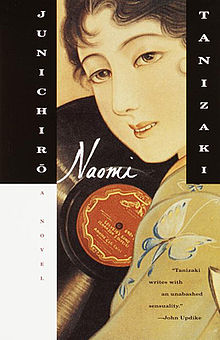- Modern girl
-
Modern girls (モダンガール modan gaaru) were Japanese women who followed Westernized fashions and lifestyles in the 1920s. These moga were Japan's equivalent of America's flappers, India's kallege ladki, Germany's neue Frauen, France's garçonnes, or China's modeng xiaojie.[1] By viewing her through a Japanese vs Western lens, the nationalist press could use the modern girl archetype to blame such failings as frivolity, sexual promiscuity, and selfishness on foreign influence.[2] The period was characterized by the emergence of working class young women with access to money and consumer goods. Using aristocratic culture as their standard of Japaneseness, the critics of the modern girl condemned her working class traits as "unnatural" for Japanese. Modern girls were depicted as living in the cities, being financially and emotionally independent, choosing their own suitors, and apathetic towards politics.[3] The woman's magazine was a novelty at this time and the modern girl was the model consumer, someone more often found in advertisements for cosmetics and fashion than in real life. The all-female Takarazuka Revue, established in 1914,[4] and the novel Naomi (1924) are outstanding examples of modern girl culture.
Contents
Origins and etymology
The Housewife's Friend 主婦の友 (Shufu no tomo), founded in 1917, and Woman 女性 (Josei), founded in 1922, both ran articles, fashion tips, and advice on the modern girl lifestyle.[5] Josei was "the bible of the modern girl."[6] Jun'ichirō Tanizaki's 1924 novel Naomi created the term 'modern girl'. The novel was such a hit that it caused considerable outrage among elders in Japan. However, younger women embraced the story and celebrated the values displayed by several of the main characters.
Behavior
Modern Girls were completely independent, both financially and emotionally. They would work service industry styled jobs and live on their own, not dependent on family. They smoked, watched movies, and hung out at the cafes. They were sexually liberated; choosing their own suitors. Many of them participated in casual sex.[5] In a 1928 short story by Kataoka Teppei, a young typist dates three "modern boys" at the same time.[7] She is described as decadent, hedonistic, and superficial.[7]
Modern girls were not political; and did not protest. Each woman sought change via herself. Consumerism drove everything they did. Women were constantly shopping at the new department stores and listening to jazz records.
Appearance
A modern girl's appearance was completely Western. They wore pumps and short dresses. They discarded the kimono for western styled 'garçonne' looks. Much of their dress and appearance resembled Western stars such as Olive Thomas, Clara Bow, and even more unusually Mary Pickford.[5] Pickford is used as a symbol modernism in Naomi. Much like the flappers, the modern girls aimed for a Western look. They also wore lipstick. Like flappers, the Bob cut was very popular.
End of modern girl era
The modern girl was a symbol of Westernization. They were also a symbol of extravagance and selfish choices. After a military coup in 1931, extreme Japanese nationalism and the Great Depression prompted a return to the 19th century ideal of good wife, wise mother.
See also
References
- ^ The Modern Girl Around the World: Consumption, Modernity, and Globalization, Edited by Alys Eve Weinbaum, Lynn M. Thomas, Priti Ramamurthy, Uta G. Poiger, Modeleine Yue Dong, and Tani E. Barlow, p. 1.
- ^ The Gender/Sexuality Reader: Culture, History, Political Economy, edited by Roger N. Lancaster and Micaela Di Leonardo, pp. 493-494
- ^ The 'Modern' Japanese Woman, The Chronicle 5/21/2004:
- ^ Makiko Yamanashi, The Takarasienne and Moga: Modernity in the Prewar Girls' Culture
- ^ a b c The Gender/Sexuality Reader: Culture, History, Political Economy, edited by Roger N. Lancaster and Micaela Di Leonardo.
- ^ "Sex in the City: Chastity vs Free Love in Interwar Japan"
- ^ a b The New Japanese Woman: Modernity, Media, and Women in Interwar Japan
Further reading
- The Gender/Sexuality Reader: Culture, History, Political Economy, Vintage Books
- The New Japanese Woman: Modernity, Media, and Women in Interwar Japan
- Dunn, Michael, Taisho Chic: Modern girls and outrage, The Japan Times, May 10, 2007.
- The Modern Girl Around the World: Consumption, Modernity, and Globalization Edited by Alys Eve Weinbaum, Lynn M. Thomas, Priti Ramamurthy, Uta G. Poiger, Modeleine Yue Dong, and Tani E. Barlow
- Silverberg, Miriam (1991). "The Modern Girl as Militant." in Gail Bernstein, Recreating Japanese Women: 1600-1945. pp 239–66.
External links
Categories:- Slang terms for women
- 1920s fashion
- Japanese culture
Wikimedia Foundation. 2010.

